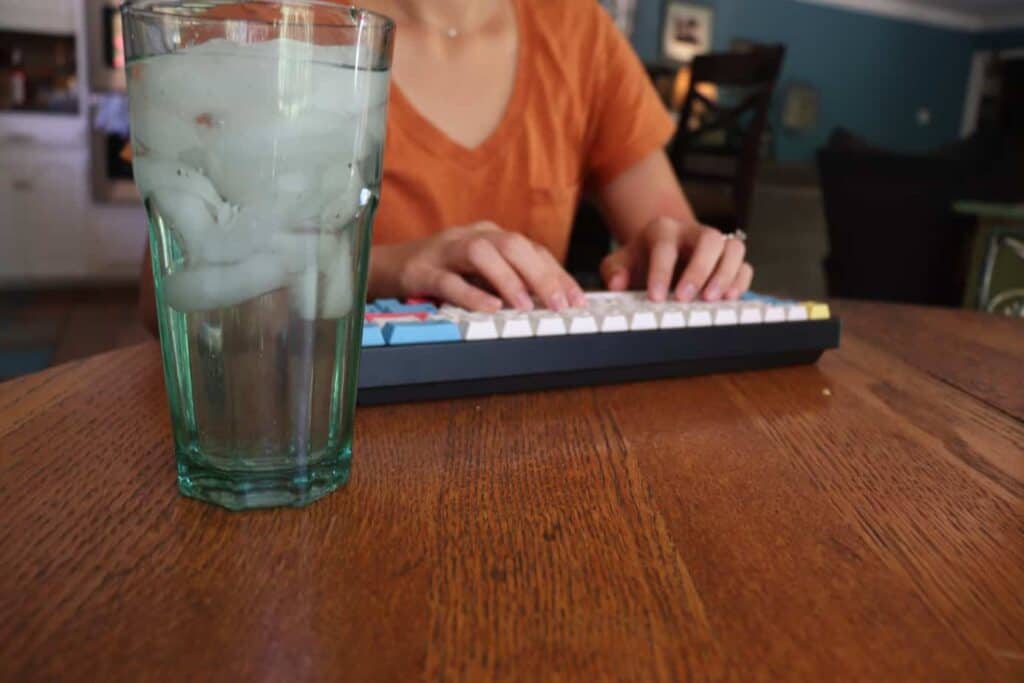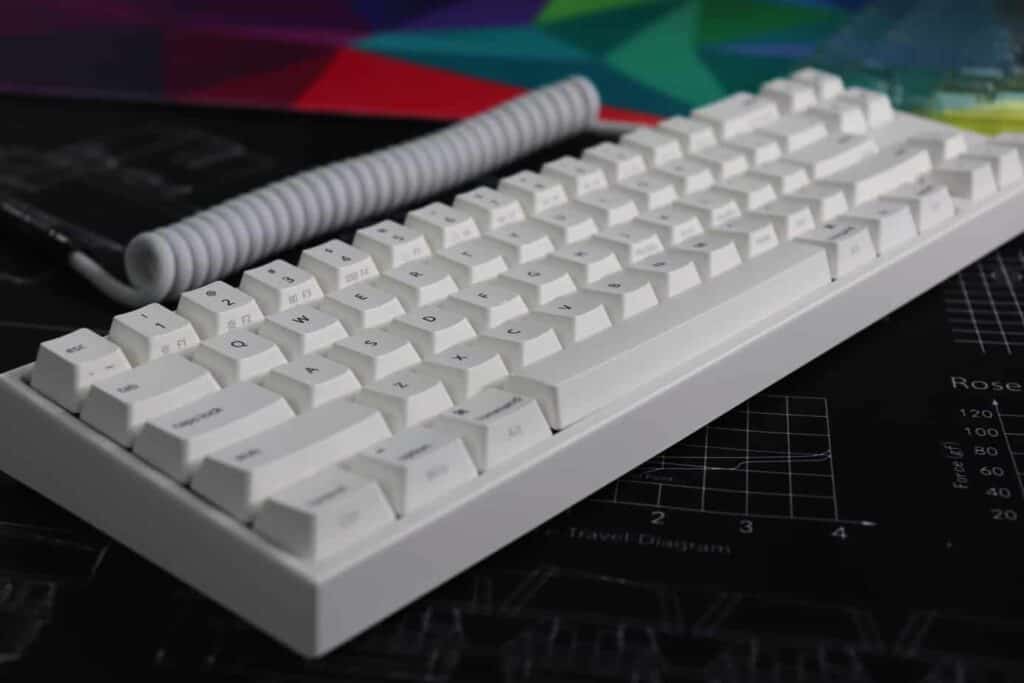If you are accident-inclined, you might be curious to know if your keyboard is actually waterproof, just in case you spill a bit of water (amongst other liquids).
It’s perfectly natural to spill every once in a while, but don’t cry over spilled milk water. So, are keyboards waterproof?
Most keyboards are not waterproof unless otherwise specified by the manufacturer. That being said, sometimes keyboards can survive small spills as long as the proper steps are taken afterwards.
Mechanical keyboards tend to be more water-resistant than other keyboard types.
We’ll walk you through how to know if your keyboard is waterproof and what to do if you have a small spill.
Most Keyboards Are Not Waterproof

We’ve all had that moment of panic where your keyboard ended up covered in water or coffee and you didn’t know if the situation was salvageable.
The truth in the matter is, keyboards are not usually waterproof.
Unless the message “waterproof” or “water resistant” are plastered all over the box, chances are, you should be careful around liquids when typing.
Spilling liquid onto your keyboard is a good way to fry your electronics.
Most keyboards have a thin membrane layer that protects the PCB (printed circuit board). Any water that seeps through can cause long-term damage if not dried properly.
If you are able to dry your keyboard and remove the liquid without any deeper-level seepage, your keyboard can walk away from the situation unscathed.
If you had a small spill and cleaned it quickly, you should be ok. Anything more might require extra precautions and drying.
Waterproof vs Water-Resistant: What This Means For Your Keyboard
Sometimes a keyboard will market itself as water-resistant, but that still doesn’t mean it’s entirely waterproof. It’s quite common to get these two terms mixed up.
Waterproof keyboards are completely OK getting wet. You could fully submerge it in the bathtub with no issues whatsoever. The keyboard would still work.
Water-resistant keyboards are protected from surface-level spills, but can still break when encountered with enough water. Water-resistant keyboards should not be fully submerged.
If you don’t know if your keyboard is waterproof or water-resistant, it’s probably neither. Most of the time, the waterproof nature of a keyboard is a huge selling point.
If you’re still not sure, you can always check the manufacturer’s website for more information.
Mechanical Keyboards Are Less Likely To Break After A Water Spill

If you have a membrane/rubber-dome keyboard, the chances of your keyboard breaking are much higher with water spills.
Mechanical keyboards don’t tend to break as easily when covered in water. The extra durable construction really pays off.
If you happen to spill a lot, it could be worth upgrading your keyboard.
The mechanical switches underneath each key are less likely to break when wet and the metal plate protects the PCB better than the membrane layer on a normal keyboard.
It could time to ditch your old crusty Dell keyboard.
What To Do If You Spill Water On Your Keyboard
If you found this article because you happened to spill water on your keyboard, don’t panic. We’ll walk you through the exact steps.
You got this.
Here is our full guide on how to clean water of your keyboard. But we’ll give you the spark notes here to save you some time.
Step 1: Unplug Your Keyboard
First things first, power off your keyboard. Shut down everything. Water and electricity don’t mix well.
Using a wet keyboard with electricity flowing through is a great way for everything to break.
Take out your backup keyboard (if you have one), you’ll need to go a couple days without your main keyboard to clean it properly.
Step 2: Remove the Keys
The bulk of the water should be on top of the keycaps, so go ahead and wipe that up quickly. A microfiber cloth is ideal because it won’t leave behind tiny pieces of fluff or scratch the keycaps.
Once the keycaps are dry, go ahead and remove them. We have a full guide on how to remove the keycaps.
You’ll need a keycap puller or you can DIY one if you’re feeling up to it. Otherwise you can try and use your fingers which is not ideal, but can still be done.
Step 3: Wipe Up Excess Water
With all of the keycaps off, you should have easy access to all of the water that accumulated underneath the keycaps.
It’s time to wipe off all of that excess water so things dry a bit faster and the water doesn’t seep into the the keyboard any further.
We recommend wiping off the keyboard with a microfiber towel. We prefer a microfiber towel because a paper towel will leave small paper particulates behind that stick to the keyboard and can jam the switches.
Wipe down the surface of the keyboard until there are no more drops or pools of water on the surface of the keyboard.
If there are smaller areas you can’t hit properly with a towel, grab a few cotton swabs and hit those sections.
Being thorough is your friend.
Step 4: Flip The Keyboard Over
Now that everything is wiped up, flip your keyboard over and place in a sunny area. Anything that dripped in should come out over this time (if there is anything).
Don’t dunk it in rice, just let it sit for a while. Patience is a virtue, so avoid getting impatient and resist the urge to plug in the keyboard.
Step 5: Wait for 48 Hours
Alright, wait for two whole days. You can do this. Just grab your backup keyboard and get to work.
Once two days have gone by, you can move onto the final step!
Step 6: Plug In And Test
The moment of truth, time to plug in the keyboard and see if it’s still working. After two days, the time has come.
Before plugging the keyboard back in, give it a gentle shake and inspect if there is any visible water remaining. If there is, I would wait another 24 hours before plugging it back in.
If not, plug the keyboard in and see if everything is working! We recommend doing a quick test to see if all of the keys still work. There is a program called key-test which will allow you to check every key on your keyboard super-fast.
If all of your keys are working properly, all that’s left to do it put the keycaps back on, then you’re good to go. Congrats!
Conclusion
Most keyboards aren’t waterproof, but small spills here and there aren’t the end of the world. You can usually salvage your setup after an accident.
Just remain calm, act quickly, and avoid being impatient during the drying process. Everything should be OK.
As a serial spiller, you can take it from me, most keyboards are more durable than you think – especially mechanical ones.
Good luck, you ol’ clutz.
